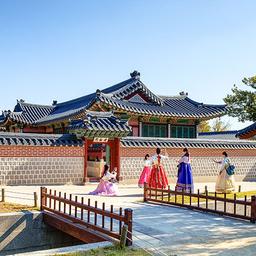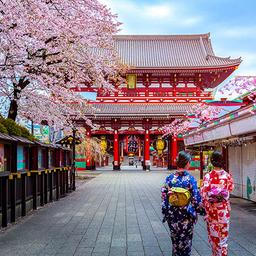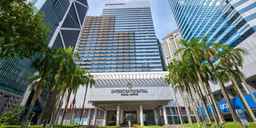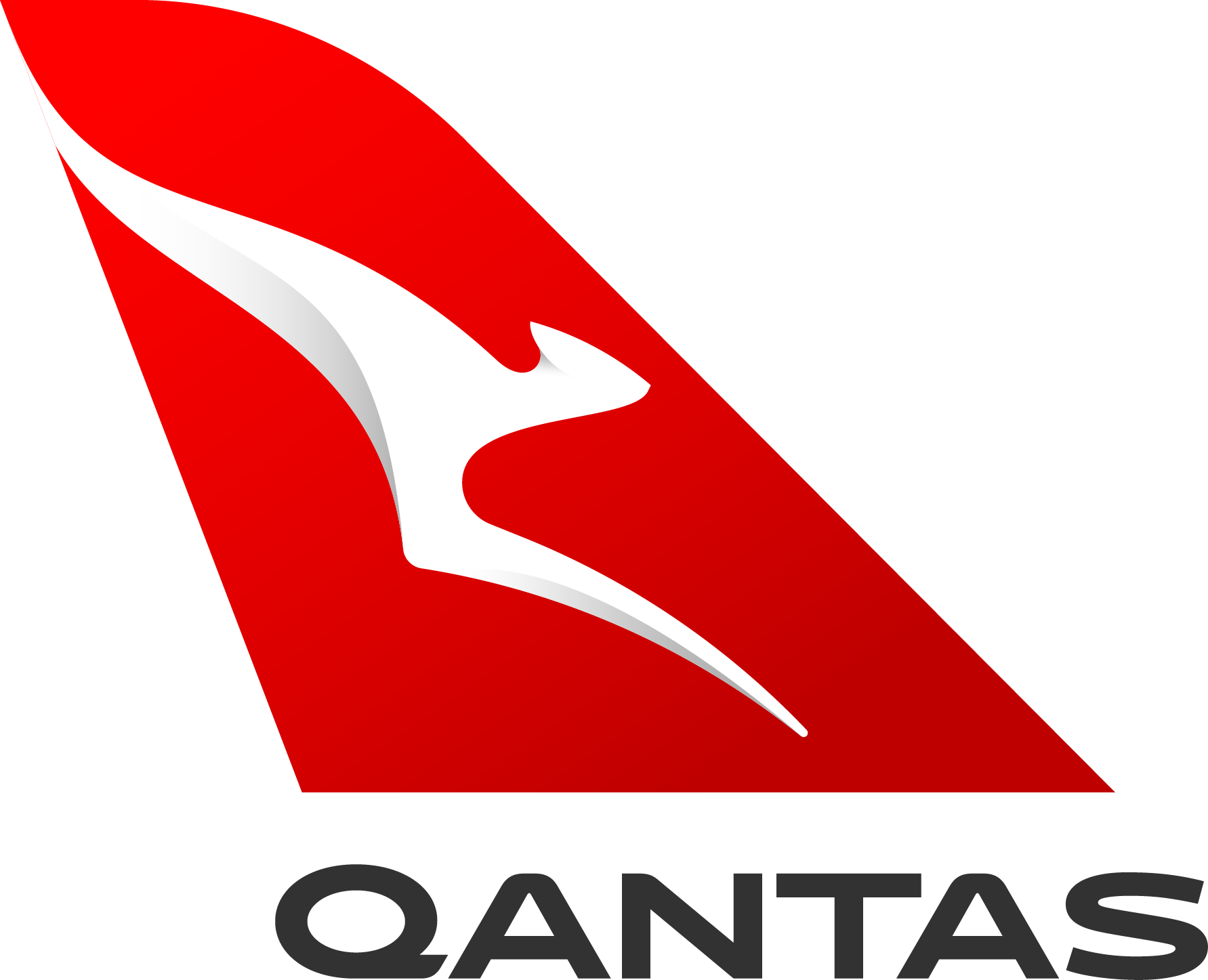
Flight Ticket and Schedule From Kota Kinabalu (BKI) to Sibu (SBW)
Flight Information from Kota Kinabalu (BKI) to Sibu (SBW)
Shortest flight time
1 hr(s), 10 mins
Direct Airline from Kota Kinabalu to Sibu
Flight Schedule from Kota Kinabalu to Sibu
Airline | Departure Time | Arrival Time | Origin airport | Destination airport | |
|---|---|---|---|---|---|
AirAsia Berhad (Malaysia) | 07:05 | 08:15 | Kota Kinabalu (BKI) | Sibu (SBW) | Book flight |
Top Flight Deals on Popular Routes
Flight Confirmed? Lock in Your Hotel Today!
When is the cheapest flight time from Kota Kinabalu to Sibu?
Exclusive for new users—register today!
Code:JOMJALAN
About Sibu
Discover the Convenience of Flying from Kota Kinabalu to Sibu
Planning a trip from Kota Kinabalu to Sibu? Whether you're traveling for business or leisure, this flight route offers a convenient way to connect these two important Malaysian destinations. Flying is the fastest and most efficient way to travel between Kota Kinabalu and Sibu, with direct flights taking just over an hour. This comprehensive guide provides everything you need to know about the Kota Kinabalu to Sibu flight route, including airlines, flight times, layover options, airport information, and travel tips to ensure a smooth journey.
Direct Flights
Airline: AirAsia
- Flight Duration: 1 hour 10 minutes
- Aircraft Used: Airbus A320, Airbus A320neo
AirAsia offers direct flights from Kota Kinabalu to Sibu, providing travelers with a quick and convenient option. The flight duration is approximately 1 hour and 10 minutes, making it the fastest way to travel between these two destinations. AirAsia operates this route with modern Airbus A320 and A320neo aircraft, ensuring a comfortable journey for passengers.
The airline typically schedules multiple flights throughout the day, with departure times ranging from early morning (as early as 6:00 AM) to evening (with the latest flight departing around 17:10). This variety of flight times allows travelers to choose a schedule that best fits their needs.
AirAsia provides various amenities and services to enhance your travel experience. Passengers can enjoy the convenience of online check-in, and those who purchase the Value Pack, Premium Flex, or Premium Flatbed options receive a complimentary 20kg baggage allowance. Regular passengers are allowed to bring onboard two bags as cabin luggage, provided the total weight does not exceed 7kg.
For frequent travelers, AirAsia's loyalty program allows you to collect points that can be used like cash to pay for future flights, hotels, food, insurance, and more, offering excellent value for regular flyers.
Airline: Malaysia Airlines
- Flight Duration: 1 hour 10 minutes
- Aircraft Used: Boeing 737
Malaysia Airlines also operates flights between Kota Kinabalu and Sibu. The airline utilizes Boeing 737 aircraft for this route.
Layover Flights
While direct flights are the most convenient option, layover flights can sometimes offer more flexibility with scheduling or pricing. Here are the main layover flight options for the Kota Kinabalu to Sibu route:
- Route: Kota Kinabalu (Malaysia) → Kuala Lumpur (Malaysia) → Sibu (Malaysia)
- Airlines: Batik Air
- Total Flight Duration: 9 hours
- Aircraft: Boeing 737
- Layovers: Kuala Lumpur International Airport (KUL), Kuala Lumpur, Malaysia layover for 4 hours 25 minutes
- Route: Kota Kinabalu (Malaysia) → Kuala Lumpur (Malaysia) → Sibu (Malaysia)
- Airlines: Malaysia Airlines
- Total Flight Duration: 7 hours
- Aircraft: Boeing 737
- Layovers: Kuala Lumpur International Airport (KUL), Kuala Lumpur, Malaysia layover for 2 hours 15 minutes
- Route: Kota Kinabalu (Malaysia) → Kuala Lumpur (Malaysia) → Sibu (Malaysia)
- Airlines: Malaysia Airlines
- Total Flight Duration: 20 hours 10 minutes
- Aircraft: Boeing 737
- Layovers: Kuala Lumpur International Airport (KUL), Kuala Lumpur, Malaysia layover for 15 hours 25 minutes (overnight)
Additional noteworthy information:
- The longest continuous layover involves an overnight stay at Kuala Lumpur International Airport, highlighting a significant waiting period between connecting flights.
- Boeing 737 is the common aircraft type used for layover flights listed, indicating its preference for regional travel within Malaysia.
- Travel durations vary significantly, from 7 hours to over 20 hours, which is crucial for travelers in their planning and preparation stages.
Information about schedule and airline subject to change based on airline policy. Please check regularly at Traveloka App.
About Kota Kinabalu International Airport - Kota Kinabalu
Location
Kota Kinabalu International Airport is located approximately 7 kilometers southwest of the city center of Kota Kinabalu, the capital city of Sabah state in Malaysia. Its strategic position on the northwest coast of Borneo Island makes it a crucial gateway to various destinations in East Malaysia and beyond. The airport is situated along Jalan Kepayan, providing convenient access to the city and surrounding areas.
The airport's coastal location offers passengers stunning views of the South China Sea during takeoff and landing, adding a scenic element to your journey. Its proximity to the city center means travelers can easily access hotels, tourist attractions, and business districts without lengthy transfers.
Airport Terminal
Kota Kinabalu International Airport consists of two main terminals: Terminal 1 and Terminal 2. Terminal 1 is the primary terminal handling most domestic and all international flights, including those operated by AirAsia and Malaysia Airlines to Sibu. This modern terminal spans three levels and features a sleek design with large glass panels that allow natural light to illuminate the space.
Terminal 1 houses a wide range of facilities distributed across its levels:
- Level 1: Arrivals hall, baggage claim, transportation services, and some retail outlets
- Level 2: Departures hall, check-in counters, immigration, security screening, and additional shopping and dining options
- Level 3: Departure gates, lounges, and more retail and food establishments
Terminal 2, which is smaller and located about 4 kilometers away from Terminal 1, primarily handles select domestic flights and charter operations.
Transport to Airport
Getting to Kota Kinabalu International Airport is convenient with several transportation options available:
- Taxi: The most direct way to reach the airport, taxis are readily available throughout Kota Kinabalu. The journey from the city center takes approximately 15-20 minutes, depending on traffic conditions. Taxis operate on a fixed fare system to the airport, eliminating the need for meter usage.
- Airport Bus: An economical option for travelers, the airport bus operates between the city center and the airport. These buses run at regular intervals throughout the day and make stops at major hotels and landmarks.
- Ride-Sharing Services: Popular ride-sharing platforms operate in Kota Kinabalu, offering another convenient option for airport transfers at competitive rates.
- Hotel Shuttles: Many hotels in Kota Kinabalu provide shuttle services to and from the airport, either complimentary for guests or for a nominal fee. It's advisable to check with your accommodation in advance.
- Rental Cars: For those preferring self-driving, rental car services are available in the city with drop-off points at the airport. The airport also houses several car rental counters for travelers arriving by air.
Facilities
Kota Kinabalu International Airport offers comprehensive facilities to ensure a comfortable experience for travelers:
Shopping and Dining:
- A diverse range of retail outlets selling local handicrafts, duty-free goods, travel essentials, and souvenirs
- Various dining options spanning from fast food chains to cafes and restaurants serving local and international cuisine
- Convenience stores for last-minute purchases
Passenger Services:
- Currency exchange counters and ATMs
- Free Wi-Fi throughout the terminal
- Charging stations for electronic devices
- Prayer rooms for Muslim travelers
- Baby care facilities
- First aid services
Premium Facilities:
- Airport lounges offering comfortable seating, refreshments, business facilities, and shower rooms
- VIP services for priority passengers
Information and Assistance:
- Tourist information counters providing details about Sabah's attractions
- Airport information desks for general inquiries
- Lost and found services
The airport's modern design, combined with its comprehensive facilities, ensures a pleasant experience for travelers departing from Kota Kinabalu to Sibu or other destinations.
About Sibu - Sibu
Location
Sibu is a vibrant commercial center and port city located in the central region of Sarawak, Malaysia. Situated on the island of Borneo, Sibu sits at the confluence of the mighty Rajang and Igan Rivers, approximately 60 kilometers from the South China Sea. This strategic location has historically made the city an important trading hub and has contributed significantly to its development.
Often referred to as the "Swan City," Sibu is the third-largest urban center in Sarawak after Kuching and Miri. The city sprawls across an area of approximately 129.5 square kilometers and is characterized by a mix of modern developments and traditional architecture, reflecting its diverse cultural heritage with strong Chinese influences, particularly from the Foochow community.
Airport Terminal
Sibu Airport (SBW) serves as the primary gateway to the central region of Sarawak. The airport is located approximately 23 kilometers from downtown Sibu, near the town of Telang Usan. The terminal building is compact yet functional, designed to handle the steady flow of domestic travelers efficiently.
The single-terminal facility features:
- A straightforward layout with clearly marked areas for arrivals and departures
- Modern amenities to ensure passenger comfort
- Six check-in counters that efficiently process passengers during peak hours
- Two aerobridges connecting directly to aircraft for weather-protected boarding
- A spacious arrivals hall with baggage claim facilities
- Well-maintained waiting areas with adequate seating
The terminal underwent significant renovations in recent years to improve passenger experience and increase operational capacity, now able to handle up to 1.8 million passengers annually. Despite its modest size compared to major international airports, Sibu Airport provides all essential services needed for a smooth travel experience.
Transport From Airport
Travelers arriving at Sibu Airport have several transportation options to reach the city center and other destinations:
- Taxis: The most readily available option, taxis are stationed outside the arrival hall. The journey to downtown Sibu takes approximately 30-40 minutes, depending on traffic conditions. Fares are typically fixed for airport transfers, providing transparency for travelers.
- Airport Shuttle Services: Some hotels in Sibu arrange shuttle services for their guests. It's advisable to contact your accommodation in advance to inquire about this service.
- Car Rentals: Several car rental companies operate counters at the airport, offering various vehicle options for those who prefer self-driving during their stay in Sibu. A valid international driving permit is required for foreign visitors.
- Private Transfers: Pre-arranged private transfers can be booked through Traveloka or other service providers for a more personalized transportation experience.
- Ride-Sharing Services: Mobile app-based ride-sharing services are gaining popularity in Sibu, offering another convenient option for airport transfers with transparent pricing.
Unlike some larger cities, Sibu does not currently have a dedicated public bus service directly connecting the airport to the city center, making taxis and pre-arranged transfers the most practical options for most travelers.
Facilities
Sibu Airport provides essential facilities to ensure passenger comfort and convenience:
Food and Retail:
- Cafes and food kiosks offering local and international refreshments
- Retail shops selling travel necessities, local products, and souvenirs
- Convenience store for snacks and last-minute purchases
Passenger Services:
- Free Wi-Fi connectivity throughout the terminal
- ATMs for cash withdrawals
- Public telephones
- Prayer rooms for Muslim travelers
- Wheelchair services and facilities for passengers with reduced mobility
- Baby care facilities
Information Services:
- Information counter staffed with knowledgeable personnel
- Flight information display screens throughout the terminal
- Lost and found services
- Tourism information materials
While Sibu Airport may not offer the extensive range of amenities found in larger international airports, it effectively provides all necessary services for a comfortable travel experience. The friendly staff and efficient operations ensure that passengers can navigate the facility with ease, whether arriving in or departing from Sibu.
FAQ Kota Kinabalu to Sibu Flight
Question: What is the flight duration from Kota Kinabalu to Sibu?
Answer: Direct flights from Kota Kinabalu to Sibu typically take about 1 hour and 10 minutes with AirAsia. Layover flights via Kuala Lumpur can range from 7 hours to over 20 hours in total travel time, depending on the length of the layover.
Question: Which airlines operate direct flights on the Kota Kinabalu to Sibu route?
Answer: AirAsia is the primary carrier offering direct flights between Kota Kinabalu and Sibu. AirAsia operates with Airbus A320 and A320neo aircraft.
Question: How much does a typical flight from Kota Kinabalu to Sibu cost?
Answer: Flight prices vary depending on factors such as booking time, season, and availability. On average, one-way fares start from as low as MYR 64 (approximately USD 15) for promotional rates and can range up to MYR 300 (approximately USD 70) for regular fares. Booking through Traveloka can help you find the best available rates and special promotions.
Question: What is the baggage allowance for flights from Kota Kinabalu to Sibu?
Answer: Baggage allowances vary by airline and fare type. With AirAsia, standard economy fares typically include 7kg of cabin baggage (allowing two items that together don't exceed this weight). Passengers who purchase Value Pack, Premium Flex, or Premium Flatbed options receive complimentary 20kg checked baggage allowance.
Question: How frequently do flights operate between Kota Kinabalu and Sibu?
Answer: Flight frequency varies by airline and season. AirAsia typically operates daily flights with multiple departure times throughout the day. It's recommended to check the current schedule on Traveloka when planning your trip.
Question: What is the best time to book flights from Kota Kinabalu to Sibu for the best rates?
Answer: Generally, booking 2-3 months in advance often yields the best fares. Mid-week flights (Tuesday through Thursday) typically cost less than weekend flights. Promotional fares are regularly offered, especially during off-peak travel seasons. Setting fare alerts on Traveloka can help you monitor price changes and secure the best deals.
Question: Are there any seasonal considerations when flying from Kota Kinabalu to Sibu?
Answer: Both Kota Kinabalu and Sibu experience similar tropical climates with high rainfall throughout the year, though slightly less rain falls between February and April. During major Malaysian holidays and festivals, such as Chinese New Year (which is particularly significant in Sibu due to its large Chinese population), flights tend to be more expensive and fully booked. The Northeast monsoon (November to March) occasionally causes flight delays due to heavy rainfall and storms.
Question: What identification is required for domestic flights from Kota Kinabalu to Sibu?
Answer: As this is a domestic flight within Malaysia, Malaysian citizens can use their national identity card (MyKad) or passport. International travelers must present a valid passport. It's recommended to arrive at least 1.5-2 hours before departure for domestic flights to complete check-in and security procedures.
Other Ways to Travel From Kota Kinabalu to Sibu
While flying is the most convenient and fastest way to travel between Kota Kinabalu and Sibu, there are alternative transportation methods available for travelers seeking a different experience:
By Sea and Land (Multi-day Journey)
This combined sea and land route involves multiple segments:
- Ferry from Kota Kinabalu to Labuan: Approximately 2-3 hours
- Ferry from Labuan to Limbang: Approximately 2 hours
- Road journey from Limbang to Miri: Approximately 3-4 hours
- Road journey from Miri to Sibu: Approximately 5-6 hours
Total journey time: 2-3 days, depending on connections and overnight stays.
This option allows travelers to experience multiple destinations along the way but requires careful planning due to ferry schedules and potential border crossings (as the route passes briefly through Brunei).
By Express Boat (Long-Distance Option)
For those seeking a unique adventure:
- Sea travel from Kota Kinabalu to Labuan: Approximately 3 hours
- Ferry from Labuan to Lawas: Approximately 2 hours
- Road transfer to Limbang: Approximately 2 hours
- Express boat from Limbang down the Rajang River to Sibu: Approximately 8-10 hours
Total journey time: 2-3 days, with overnight stays required.
This option provides a fascinating glimpse into the river life of Borneo and passes through remote areas not accessible by other means of transportation. The Rajang River journey is particularly noteworthy as it traverses Malaysia's longest river.
By Road (Extremely Long Route)
The road journey between Kota Kinabalu and Sibu is extremely long and challenging:
- Drive from Kota Kinabalu through Brunei to Miri: Approximately a full day of driving (10-12 hours)
- Drive from Miri to Sibu: Approximately 6-8 hours
Total journey time: Approximately 16-20 hours of pure driving time, not including rest stops, border crossings, or overnight stays. This route requires passing through Brunei twice, necessitating proper documentation for border crossings.
This option is only recommended for experienced drivers familiar with Borneo's road conditions and those with ample time. The journey provides access to numerous small towns and villages along the Pan Borneo Highway that are rarely visited by tourists.
Given the geographical separation between Kota Kinabalu (in Sabah) and Sibu (in Sarawak), with no direct land connection that doesn't pass through Brunei, flying remains the most practical option for most travelers. The alternative routes described above are more suited to adventure travelers or those specifically interested in experiencing the journey itself rather than reaching Sibu quickly.
Explore Sibu
Popular Destinations in Sibu
- Sibu Central Market (Pasar Tamu)
Considered the largest indoor market in Sarawak, the Sibu Central Market is a bustling hub of activity spanning multiple floors. The ground floor houses fresh produce vendors selling an impressive array of local fruits, vegetables, and fish from the Rajang River. The upper floors feature handicrafts, textiles, and local delicacies. This vibrant market offers an authentic glimpse into local life and Sibu's multicultural character, making it an essential first stop for visitors.
- Sibu Heritage Centre
Located in the heart of the city, this cultural museum showcases the rich history and diverse heritage of Sibu. The center houses fascinating exhibits on the Foochow Chinese settlers who significantly influenced the development of the region, as well as displays on indigenous Iban and Melanau cultures. Visitors can explore historical artifacts, traditional costumes, ancient tools, and informative displays that chronicle Sibu's evolution from a small river settlement to a thriving commercial center.
- Tua Pek Kong Temple
This striking red and gold Chinese temple is one of Sibu's most iconic landmarks and the oldest temple in the city, dating back to 1870. Dedicated to the deity Tua Pek Kong, the temple features intricate architectural details, ornate carvings, and a seven-story pagoda offering panoramic views of the Rajang River and downtown Sibu. The temple becomes particularly lively during Chinese festivals, especially Chinese New Year and the Wang Kang Festival.
- Rajang Esplanade
This scenic riverfront promenade stretches along Malaysia's longest river, the mighty Rajang. The esplanade offers beautiful views of river life, with traditional longboats and modern vessels navigating the waters. The area comes alive in the evenings when locals gather to enjoy the cooling breeze and sunset views. Various food stalls set up along the esplanade, offering a perfect opportunity to sample local delicacies while watching the river activity.
- Sibu Night Market
Located at Butterfly Garden in the town center, the Sibu Night Market is a foodie's paradise that operates every evening from around 6 PM. Dozens of stalls offer an incredible variety of local street food, reflecting the city's diverse cultural influences. Visitors can sample Foochow, Malay, and indigenous delicacies all in one location. Beyond food, the market also features vendors selling clothing, accessories, and souvenirs, creating a vibrant atmosphere that showcases Sibu's community spirit.
Popular Cuisine in Sibu
- Kompia
This iconic Foochow bread is Sibu's signature food item – a bagel-like pastry with a crispy exterior and soft, chewy interior. Traditional kompia are baked in large clay ovens and come in various forms, from the plain original version to modern variations filled with minced pork, onions, or even more creative fillings like cheese or custard. The most authentic kompia can be found at small family-run bakeries throughout Sibu, particularly in the Foochow-dominated areas of the city.
- Kampua Mee
Another staple of Sibu's food scene, kampua mee consists of dry noodles tossed in pork lard, shallot oil, and soy sauce, typically served with sliced barbecued pork (char siu). This deceivingly simple dish showcases the Foochow community's culinary heritage and is available at numerous coffee shops and food courts throughout Sibu. Variations include red kampua (with more sweet soy sauce) and white kampua (a lighter version with less sauce).
- Diang Bian Hu (Soupy Rice Noodles)
This comforting Foochow dish features silky, handmade rice noodle sheets in a savory broth, often served with fish balls, minced pork, and vegetables. The preparation is fascinating to watch as skilled vendors scrape thin sheets of rice batter directly into boiling broth. The dish is particularly popular for breakfast among locals and can be found in traditional coffee shops throughout Sibu.
- Sibu Layer Cake (Kek Lapis)
While layer cakes are popular throughout Sarawak, Sibu's versions are particularly renowned for their intricate patterns and vibrant colors. These meticulously crafted cakes consist of multiple thin layers in various colors and flavors, often arranged in geometric patterns that are revealed when sliced. Traditional flavors include pandan, chocolate, and prune, though innovative bakers continuously create new variations. These cakes are especially popular during festivals and celebrations.
- Bian Nyuk (Foochow Meatballs)
These distinctive meat dumplings differ from typical Chinese meatballs by incorporating a higher percentage of fish paste mixed with pork, giving them a unique springy texture. The meatballs are typically served in a light, clear broth with leafy vegetables and mushrooms, creating a comforting and nutritious soup. Some vendors also offer a dry version where the meatballs are tossed in a savory sauce. This dish represents the resourcefulness of early Foochow settlers who adapted their traditional recipes to local ingredients.
Sibu's culinary landscape beautifully reflects its multicultural heritage, with Chinese Foochow influences predominating but complemented by Malay, Iban, and other indigenous flavors. The city takes great pride in its food culture, and exploring these local specialties provides visitors with an authentic taste of Sibu's unique identity within Malaysian Borneo.
Planning your trip from Kota Kinabalu to Sibu is made easier with Traveloka's comprehensive flight booking services. With regular direct flights operated by reputable airlines and a flight time of just over an hour, this route offers convenient access between two of Malaysian Borneo's most important cities. Whether you're traveling for business or to explore Sibu's unique cultural heritage and cuisine, booking your flight through Traveloka ensures a smooth and hassle-free travel experience.
Remember to check Traveloka regularly for the latest flight schedules, promotional fares, and travel packages that can enhance your journey from Kota Kinabalu to Sibu. Safe travels!
Flight Information to Sibu
Flight Duration | 1 hr(s) 10 mins |
Airport in Kota Kinabalu | |
Airport in Sibu |
Frequently Asked Questions
Popular Airline
For all your unique travel choices, we got you
Popular Routes from Kota Kinabalu International Airport
Popular Routes from Sibu
Popular Airline to Sibu
Popular Routes
Popular Destinations
Popular Airlines
Popular Airline & Destination
Popular Airports
Top Domestic Destination
Top International Destination
Top Flight Airport

















































































 Facebook
Facebook Instagram
Instagram TikTok
TikTok Youtube
Youtube Twitter
Twitter Telegram
Telegram